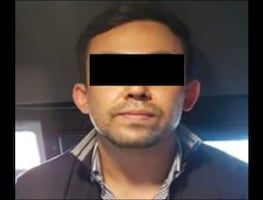With an investigation barely underway, Mexican journalist protection groups are already expressing fears that authorities won't consider the brutal killing of a photojournalist as being related to his work - even though he fled the state he covered fearing for his safety.
Mexico City officials said Sunday they are pursuing all lines of investigation in the death of Rubén Espinosa, whose tortured body was found along with four slain women in an apartment in Mexico's capital. Prosecutor Rodolfo Ríos Garza said authorities were following protocols for crimes against journalists and crimes against women, as well as looking at robbery as a possible motive in the case.
But when dealing with journalists' killings, authorities in Mexico historically have been quick to discard their work as a motive, even though the country is the most dangerous in Latin America for reporters. Some 90 percent of journalist murders in Mexico since 1992 have gone unpunished, according to the Committee to Protect Journalists.
"What's particularly pernicious is that violence against the press is violence against society," said Darío Ramírez, director of the Article 19 free press advocacy group. "There are many places in the country where silence paves the road so that organized crime, corruption, everything that destroys a society can continue in a manner without ... setbacks or obstacles."
Espinosa fled Xalapa, the capital of the Gulf Coast state of Veracruz, for Mexico City in June after he said that unknown people were following him, taking his photograph and harassing him outside his home. Veracruz has been a dangerous state for reporters, with 11 journalists killed just in current administration of Gov. Javier Duarte that started in 2010. Two more, including Espinosa, have been killed outside of the state and three have gone missing.
Fears that Espinosa's death could end in impunity were fueled by Sunday's news conference by Ríos, when Mexico City's prosecutor never acknowledged that Espinosa was seeking refuge in Mexico's capital, saying he came to the city for "professional opportunities." The comment led to shouts and protests from reporters, who asked if the events that drove Espinosa into self-exile in June were being investigated. He had been working for investigative newsmagazine Proceso and other media outlets
Ríos only repeated that all lines of investigation were being pursued, including his work as a journalist.
Espinosa had said in interviews that he was harassed over several years while covering events in Veracruz, including once being told to stop taking photos of students detained during a protest in 2012, the same year another Proceso journalist, Regina Martínez, was killed. Her role reporting on government corruption was never considered as a motive for her killing. Instead, officials in Veracruz said it was robbery.
"Stop taking photos if you don't want to end up like Regina," Espinosa said he was told by a government representative controlling the crowd.
A few days before fleeing, he had placed a plaque at a Xalapa plaza renaming it "Regina Martínez Plaza" as a protest to the government's handling of her case.
"We're saying loud and clear that we want Duarte in jail, that no more journalists, not a single one, can be assassinated in Veracruz," said Neftali Granados, a Veracruz student speaking at a protest rally in Mexico City that drew about 200 people.
Duarte issued a statement Sunday saying he lamented the "aberrant" killings in Mexico City and is confident that prosecutors will solve the case as soon as possible.
In June, he accused some reporters of being involved in organized crime.
"We all know who is involved in the underworld," Duarte said. "There's no reason to confuse freedom of expression with representing the expression of criminals via the media."
The five bodies were found late Friday in a middle-class Mexico City neighborhood. The building was in range of several security cameras on the street and Ríos said they have video evidence in the crime, though he did not elaborate. The attackers would have had to go through two doors to get inside, and neither had signs of damage or break in.
Ríos also said the apartment was ransacked and robbed. Three of the women lived there and a fourth was the housekeeper.
Ríos did not identify the other victims, only giving their ages as 18, 29, 32 and 40. All were shot in the head with a 9 mm weapon. Espinosa sustained severe injuries to his face before he was killed, Ramírez said.
Ramírez said Espinosa knew one of the women from working in Veracruz.
It was the first time a journalist was killed in Mexico City since 2006, when José Manuel Nava Sanchez, a columnist for El Sol de Mexico, was found stabbed to death in his apartment with valuables missing, according to the Committee to Protect Journalists.
Article 19 said Espinosa's death marks a new milestone in violence against the press because he was the first journalist to be killed in exile in the capital. The agency said in the last five years it has helped about 70 journalists under threat find refuge in the capital.
"The level of impunity is what allowed this to happen," said a journalist in Mexico City who also had to flee Veracruz. "Displaced journalists used to come to Mexico City as an island of protection. Now there is no place to go, no place to run."
The journalist did not want to be named for security reasons.













